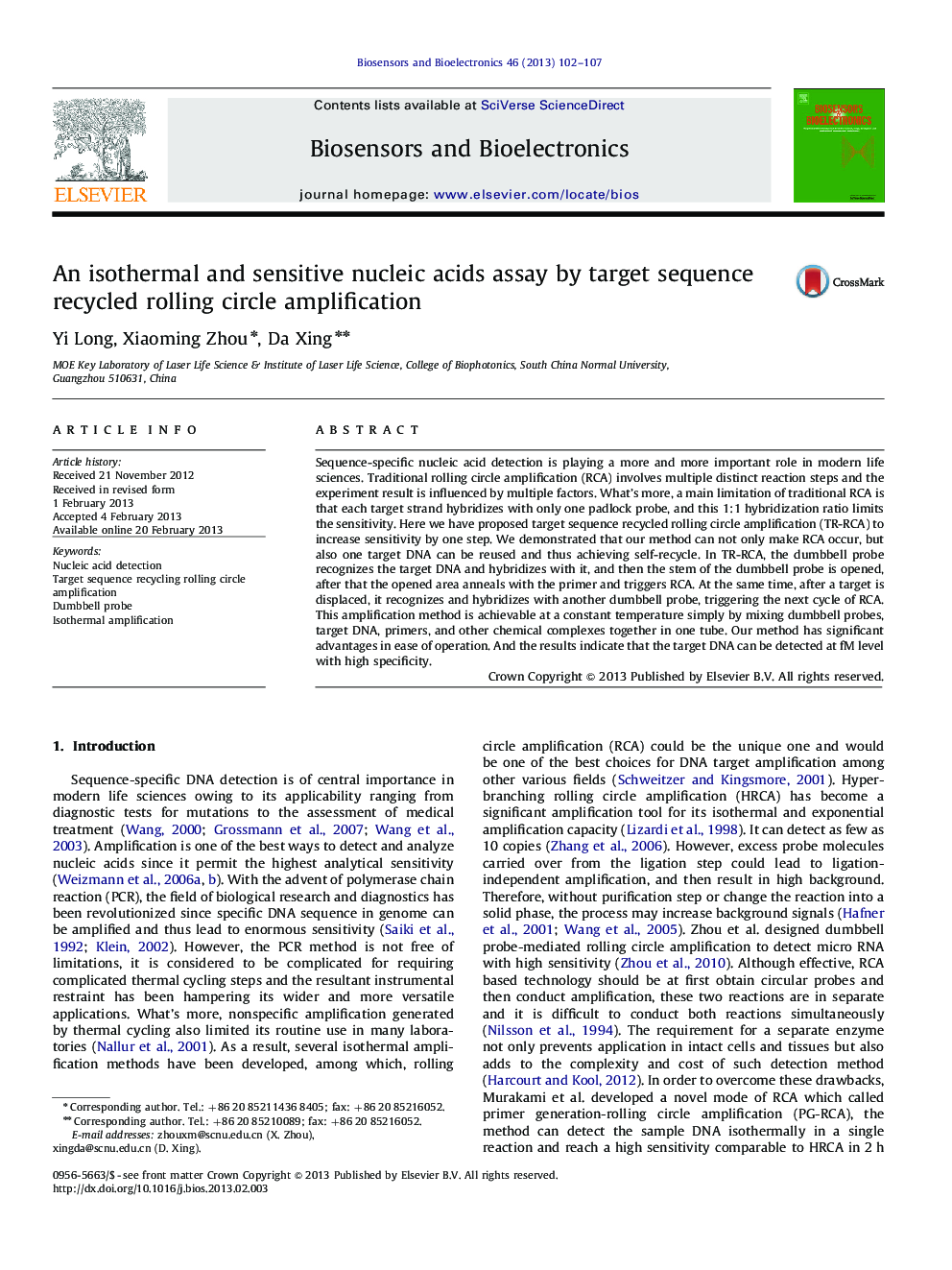| Article ID | Journal | Published Year | Pages | File Type |
|---|---|---|---|---|
| 867179 | Biosensors and Bioelectronics | 2013 | 6 Pages |
Sequence-specific nucleic acid detection is playing a more and more important role in modern life sciences. Traditional rolling circle amplification (RCA) involves multiple distinct reaction steps and the experiment result is influenced by multiple factors. What's more, a main limitation of traditional RCA is that each target strand hybridizes with only one padlock probe, and this 1:1 hybridization ratio limits the sensitivity. Here we have proposed target sequence recycled rolling circle amplification (TR-RCA) to increase sensitivity by one step. We demonstrated that our method can not only make RCA occur, but also one target DNA can be reused and thus achieving self-recycle. In TR-RCA, the dumbbell probe recognizes the target DNA and hybridizes with it, and then the stem of the dumbbell probe is opened, after that the opened area anneals with the primer and triggers RCA. At the same time, after a target is displaced, it recognizes and hybridizes with another dumbbell probe, triggering the next cycle of RCA. This amplification method is achievable at a constant temperature simply by mixing dumbbell probes, target DNA, primers, and other chemical complexes together in one tube. Our method has significant advantages in ease of operation. And the results indicate that the target DNA can be detected at fM level with high specificity.
► We proposed TR-RCA for isothermal, high sensitive and specific nucleic acids sequence detection. ► We confirm the self-ligation of dumbbell probe and verify the TR-RCA is high specific. ► We prove the target can be reused and meanwhile the rolling circle amplification can occur by TR-RCA. ► We optimize the TR-RCA experiment condition. ► We examine the detection limit of the TR-RCA and found that it can detect as low as 100 fM DNA.
